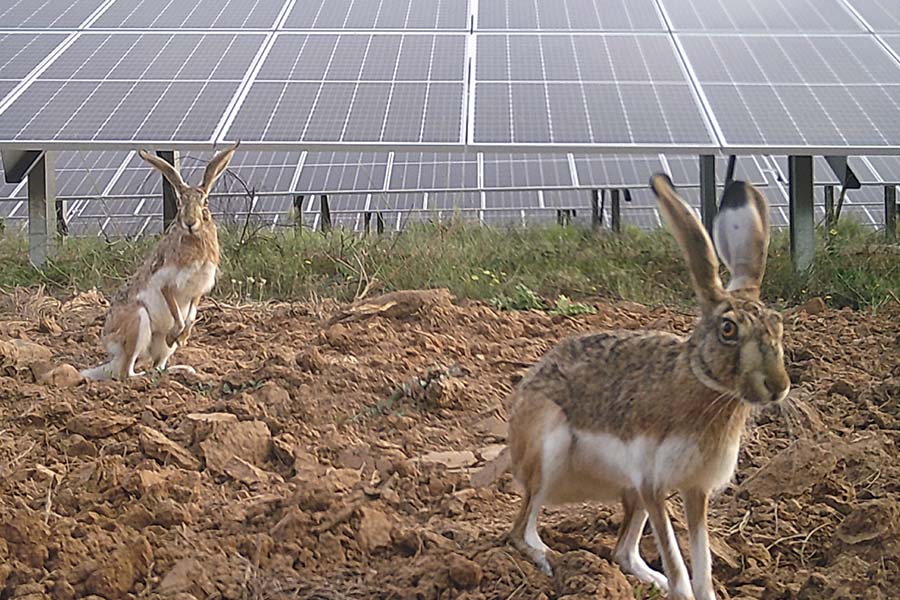A study reveals that Iberdrola España's photovoltaic plants are "highly usable" areas for wildlife and local biodiversity
-
More than 10 different species of mammals and 64 small birds have been sighted inside the Campo Arañuelo III solar plant in Extremadura.
-
It is concluded that there is no difference between the inside and outside of the photovoltaic plant in terms of diversity, which is an example of coexistence with the environment.
-
The environmental and social coexistence initiatives are included in the Convive Programme in which the company works.

An environmental study has confirmed that Iberdrola España's Campo Arañuelo III Photovoltaic Solar Plant, located in the municipality of Romangordo (Cáceres), is "a peaceful and highly wildlife-friendly space", which is an example of coexistence between photovoltaic use and the environment,a s well as the preservation and promotion of local biodiversity.
The study has confirmed the presence inside the photovoltaic plant of more than 10 different species of mammals and up to 64 small birds, which is "a favourable environment for native fauna".
Specifically, the collected archive of images and videos documents nearly 9,000 sightings and confirms the presence of mammals such as deer, rabbits, beech marten, genets, wild boar, hares, mongoose, field mice, badgers and foxes, as well as different species of birds such as goldfinches, house martins, coal tit, short-toed eagles, turtle doves, partridges, blackbirds and thrushes, among others.
For Alfredo Ortega, biologist and author of the report, "it is evident that there are no significant differences in terms of diversity between the inside and outside of the installation. The type of enclosure used facilitates the movement of any species of mammal in the area. Photovoltaic plants can coexist perfectly well with nature".
For Nicolás Antón, head of Iberdrola España in Extremadura, "this is an example of the good work carried out within the Convive Programme, which facilitates the symbiosis between nature, society and the economy. These photovoltaic plants generate clean energy and are also biodiversity-friendly environments".
The Campo Arañuelo III plant has been operational for two years and has a capacity of 40 MW of power, in addition to a storage battery of 3 MW. It is made up of 11 solar power blocks that occupy a surface area of approximately 53 hectares, distributed in three areas separated from each other by areas of natural vegetation. The perimeter enclosure of the facility is made of galvanised steel hunting mesh that allows permeability for wildlife.
This plant was also awarded the UNEF Seal of Excellence in Sustainability. This distinction recognises solar power plants built with the highest criteria for social and environmental integration.
The report also concludes that the plant has made it possible to "transform a previously unfavourable environment" caused by former stockpile areas and areas degraded by the construction of the motorway, into a peaceful and highly usable space for wildlife.
Camera-trapping
The field study was commissioned by Iberdrola España and carried out by the company Estudios Medioambientales y Territoriales (EMAT), between May and October 2023, using the camera-trapping technique, specialised in monitoring medium and large land mammals. A total of 8 cameras equipped with motion-activated sensors have been used to record images of all individuals that enter the sensors' field of action. They have been placed both inside and outside the photovoltaic plant to check if there are differences between the two areas.
In short, the study demonstrates that solar photovoltaic plants are peaceful and highly wildlife-friendly spaces – highlighting the positive role that these installations can play in the preservation and promotion of local biodiversity, which is an example of coexistence.
